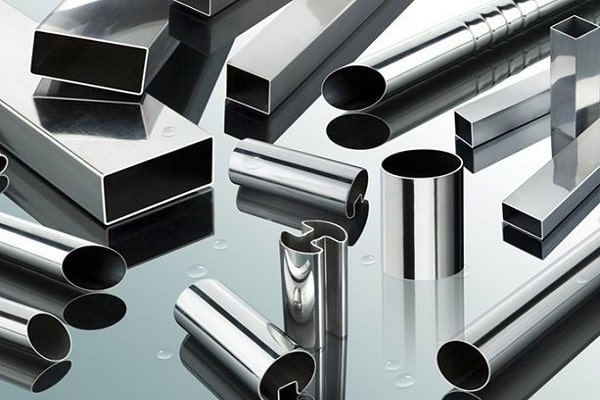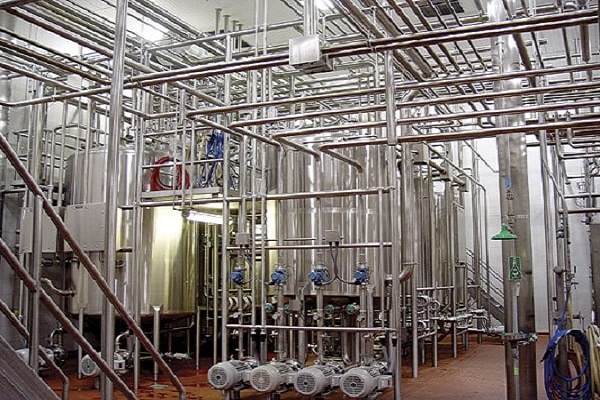Stainless steel and each family of steel alloys usually contain 10 to 30% chromium. Chromium, in combination with its low carbon content, provides significant resistance to corrosion and heat. To increase the corrosion resistance in certain environments, increasing the oxidation resistance of elements such as nickel, titanium, aluminum, niobium, copper, nitrogen, sulfur, phosphorus or selenium may be added. These elements give special properties to the alloys.
Most stainless steels are first melted in arc furnaces or oxygen furnaces and then refined mainly to reduce the amount of carbon in another tank. In the argon-oxygen descaling process, a mixture of oxygen and argon gas is injected into the liquid steel. By changing the ratio of oxygen and argon, it is possible to remove carbon at levels controlled by its oxidation to carbon monoxide. Thus, cheaper raw materials such as high carbon ferrochrome may be used in primary smelting operations.
Common types of stainless steels :
Steel 304 : One of the most common types of stainless steel. Due to the high content of chromium and nickel in this type, it is a suitable choice when manufacturing equipment for chemical processes, food and dairy and beverage industries. This type has an excellent combination of strength, corrosion resistance and build ability.
Steel 316 : This stainless grade has 18% chromium, 14% nickel. These compounds increase the corrosion resistance of steel. This type of steel can withstand temperatures up to 1600 degrees Fahrenheit. Type 316 is used in the chemical, paper and pulp industries, for the processing and distribution of food and beverages, and in more corrosive environments. It is also used in the marine industry due to its corrosion resistance.

Applications of stainless steel in various industries
Medical and pharmaceutical industries:
Steel is great for use in medical settings, as it has a very good sterilization and corrosion resistance.
Steel is used in the manufacture of surgical and dental instruments, utensils and tables related to surgery and other medical equipment. In some cases, this metal is also used to make artificial joints.
Also in pharmaceutical plants all equipment including tubes, holding tanks and… made of stainless steel.

Food industry:
Raw materials in the food industry are generally acidic. Due to the high corrosion of these acids, the alloys used in the manufacture of equipment in these industries should not suffer any corrosion because in addition to reducing the mechanical strength in the corroded areas, the chemical compounds of the corrosion process product can be toxic and contaminate the product. Be the final in the food industry. That is why stainless steels are widely used in these industries. 304 stainless steel is the main grade of food processing equipment. Refractories 309 and 310 are used in environments containing hot acetic acid and citric acid.

Cosmetics industry:
The process and performance of the cosmetics industry is carried out by the production lines of the pharmaceutical and health industries, both semi-automatically and fully automatically. The production line of cosmetic creams has the ability to produce an average of 15 to 30 tubes per minute by the machine. Semi-automatic filling In the case that it is possible to fill between 30 and 40 tubes using a fully automatic device.
In this production line, the plc system is used. In fact, this control system has the ability to program and the consumer can apply the necessary settings in the form of data on it and perform the necessary processes to display the desired output.
